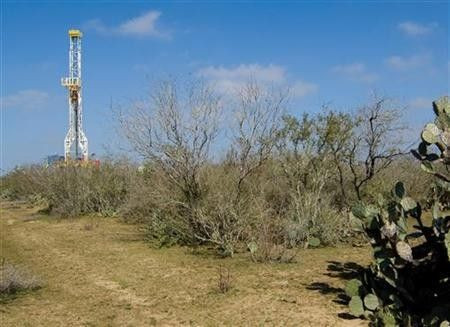Q&A: Petroleum Engineering Professor Talks About Forecasting Shale Reserves And Hydraulic Fracturing

Dr. John Lee is a professor of petroleum engineering at the University of Houston and is pioneering research into forecasting more accurately the reserves of crude oil and natural gas in unconventional formations.
Unconventional formations, those like shale rock that have extremely high resistance to flow, have transformed the energy industry with exponentially growing oil and gas production in the past decade. But geologists and engineers have much to learn about the newer formations, where hydrocarbons exist in tiny pores and behave very differently than in conventional formations, where folds of rock trap them.
Lee presented his research to Midland College in Midland, Texas this week. This year, he is planning to discuss his work in Russia, the U.K., Canada and Colombia.

Lee spoke with IBTimes about the university’s research, partially funded by Royal-Dutch Shell.
What more do researchers have to learn about forecasting unconventional reservoirs’ reserves?
Our goals are to be able to do a more accurate job of forecasting. To forecast at all, we have to develop mathematical models. Unfortunately, the shales are so new, there’s not any ways we can confirm that the forecast that we make with the available models are going to be correct. We need to develop ways to validate our models to ensure we’re correct. Because we’re not sure now, we have to be conservative in our estimates.
One of our techniques in studying the accuracy is to take histories available and estimate the second half of the reserve. But the available histories are relatively short, so just because we can predict the second half from the first half doesn’t mean we can know what will happen in the next 20 years. So we have to do the best we can with what we have.
Were you surprised by anything last year in your research?
No big surprises, but I do find that the behavior in these reservoirs is quite different than that in conventional reservoirs. We really have to rethink how we think about forecasting.
The way the fluids behave is much different. They also behave differently in the reservoirs than in the lab. You expect with a certain drop in pressure a certain amount of gas might come out of a solution of oil, but in the field, it’s typically quite a bit less. Fundamentally it is the extremely small pores in the shale in which these hydrocarbons occur. The throats to those pours have sizes the same size as the molecules of natural gas.
What do oil and gas companies need to know about unconventional reserves before they commit to drilling?
They need to have done some preliminary resource estimates and use that to determine whether the hydrocarbon is there in sufficient amount and learn enough about the reservoir rock to know that they can be hydraulically fractured. The rock has to be brittle enough and there has to be enough hydrocarbon in them.
Is there a difference in quality among hydrocarbons?
The difference in quality is whether the hydrocarbons are there as liquids or dry gas. The current market price of dry gas is somewhat depressed, and a lot of hydrocarbons cannot be produced commercially. The real interest is in reservoirs that have a lot of liquids; we call it oil. The market value of oil is much higher than gas.
Where do you see tight oil or shale gas reserves increasing sharply this year?
It’s increasing the fastest in North America, U.S. and Canada. There’s development underway in Mexico. Currently, the Argentine work is progressing. Shales are known throughout the world. Anywhere there’s oil and gas there’s shale because shale formation was the source of the oil and gas. There’s also big shale development in Saudi Arabia now, and some in China. Currently, I’m proposing a research proposal for Abu Dhabi, for ADNOC [Abu Dhabi National Oil Company].
The reserve findings are increasing in North America because it had more incentive to get started earlier because our production of conventional hydrocarbons was diminishing. There’s been less incentive in other parts of the world, and it’s much more expensive in other parts of the world. It will continue to be expensive, at least until other countries have the shale’s resources developed. There hasn’t been enough demand in other countries yet.
Can the U.S. move and refine natural gas for exports? Does it have that capacity already or is that infrastructure underdeveloped?
The U.S. has much of the infrastructure that would be required to export natural gas. The big problem is getting the go ahead from the government. Not many licenses, not nearly enough have been approved. Until the permits are obtained, the amount of gas is going to be limited.
Some opponents want to see hydraulic fracturing limited or not allowed at all, and they say if this export was promoted there would be a lot more drilling, so it’s political. I don’t think there are any significant risks related to hydraulic fracturing. There hasn’t been a single case documented that hydraulic fracturing has harmed any water source, and several top government officials know this.
© Copyright IBTimes 2024. All rights reserved.






















